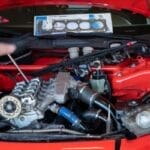When you own a boat, it’s common to run into a few problems now and then. However, some of the most regular hazards with watercraft come down to electrical issues. It’s always a good idea to know how to identify the most common marine electrical problems in order to understand how to make proper repairs.
Improperly Installed Battery
The easiest mistake to make with your boat’s electrical system is not installing the battery correctly. Whether you’re using an older lead-acid battery or a modernized lithium-ion battery, it’s crucial to ensure you hook everything up correctly. If your boat is experiencing electrical problems, it’s important to double-check that you charged the battery and that it is properly attached. Your ship won’t go very far without a battery, so we suggest starting at this point when analyzing any potential issues.
Faulty Inverter Systems
One of the most significant advantages of modern boat technology is that inverters allow us to utilize the boat’s battery by converting DC battery power into AC adapter power. Energy inversion is great for using technology like televisions or smaller appliances on your boat; however, another common marine electrical problem is failing to adhere to proper safety standards. An improper inverter system may overload your watercraft’s electrical system and damage your boat and any appliances you plug in.
Issues With Frequency Conversion
Frequency conversion is common when using electrical systems or devices from different countries. Because many boats in the United States operate at 120 volts—while many other countries use 240 volts—watercraft is a standard industry that utilizes frequency conversion. Therefore, it’s a good idea to know where your boat comes from and what voltage you’re working with before making any electrical adjustments. Frequency conversion allows you to safely use devices and electronics that operate on a different electrical frequency and may not match up with the schematics of your watercraft.








































